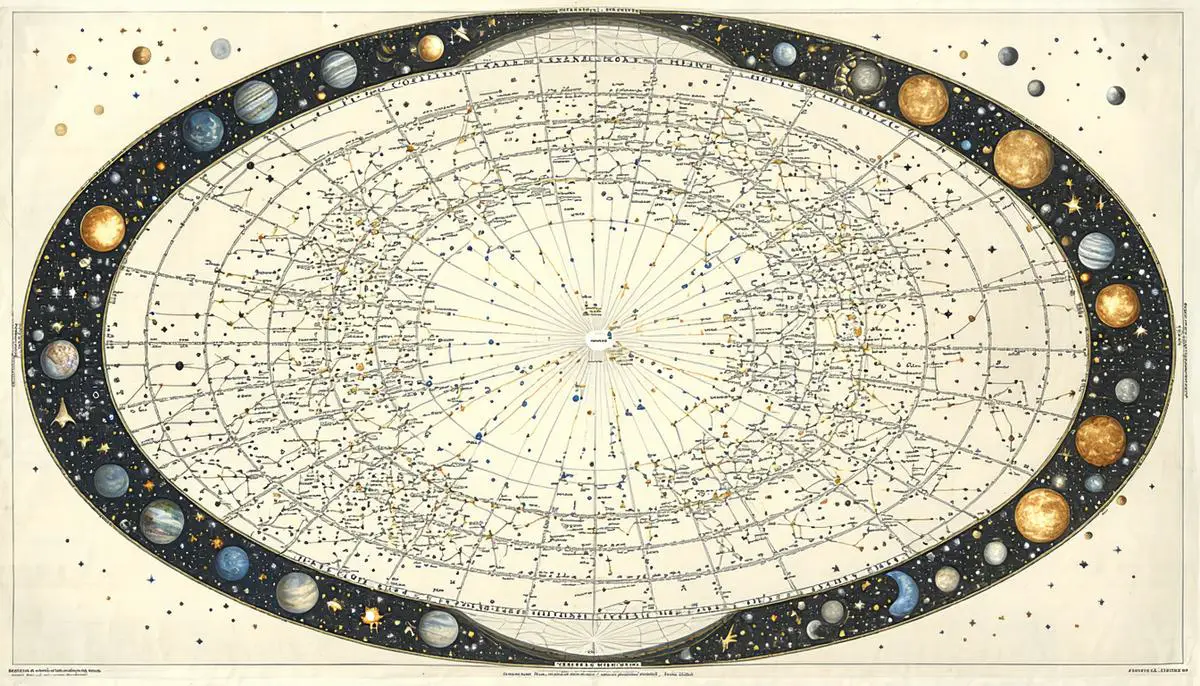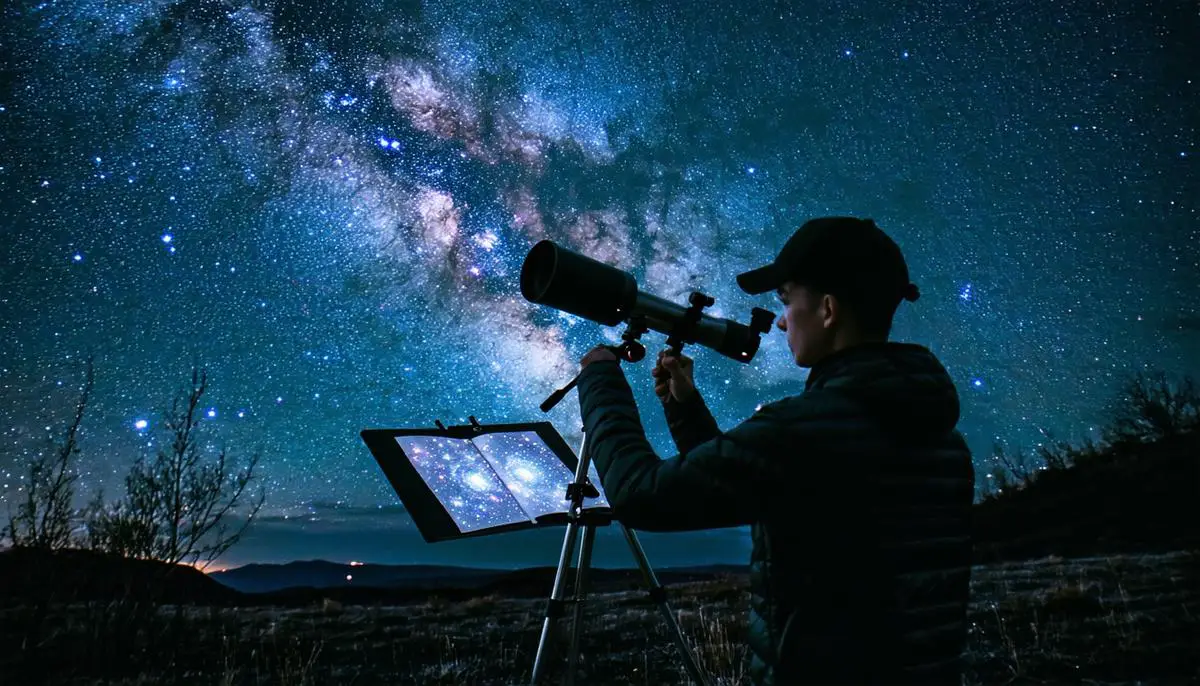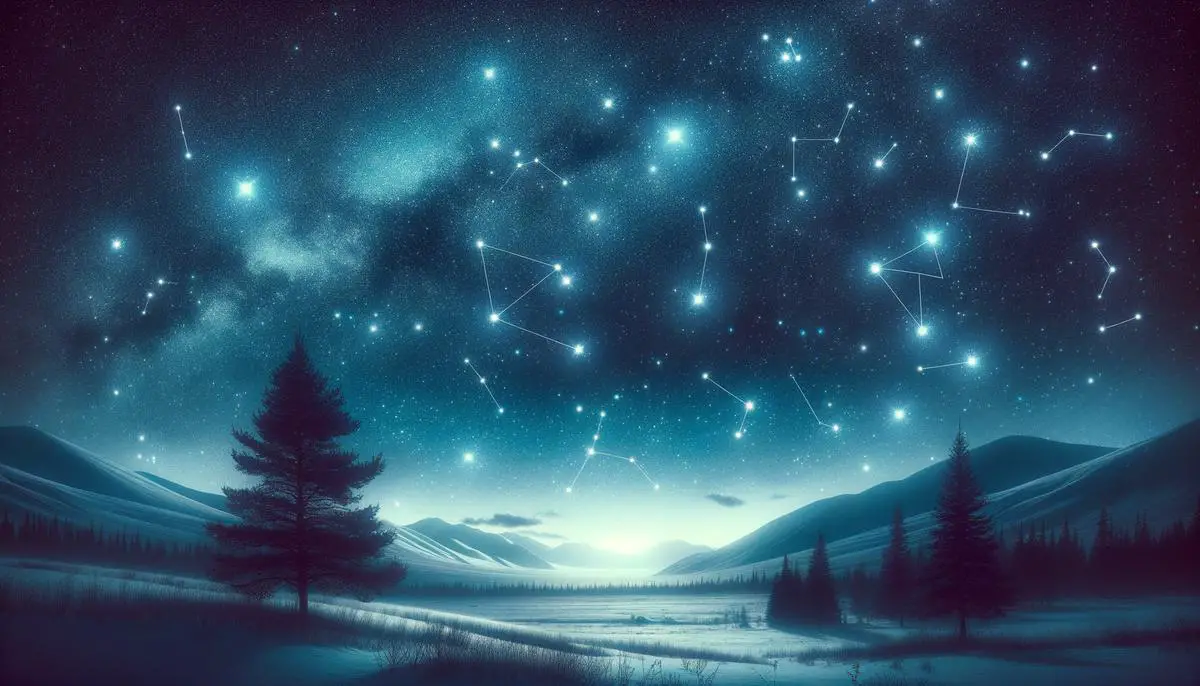Prominent Northern Constellations
Ursa Major, known for the Big Dipper asterism, is a key northern constellation. The stars Merak and Dubhe in the Big Dipper point to Polaris, the North Star, in Ursa Minor. Polaris marks true north, historically crucial for navigation.
Orion, the brightest constellation, features the distinctive Belt and notable stars like Betelgeuse and Rigel. The Orion Nebula, visible below the Belt, is a stellar nursery.
Cassiopeia's W or M shape provides a reliable reference point in the northern sky. Cepheus, though less prominent, is recognizable by its house-like shape and contains the red supergiant Garnet Star.
Draco winds around the Little Dipper, with its star Thuban once serving as the North Star. The Summer Triangle, formed by Vega in Lyra, Deneb in Cygnus, and Altair in Aquila, is a prominent summer feature.
These constellations serve as both mythological storytellers and practical guides for nighttime observation.
Seasonal Changes in Visibility
The visible constellations change as Earth orbits the Sun, creating a dynamic celestial display throughout the year.
- Winter: Showcases Orion, with its distinctive Belt, bright Rigel, and red Betelgeuse. Nearby, Taurus features the red star Aldebaran and the Pleiades cluster.
- Spring: Brings Leo, marked by the Sickle asterism and bright Regulus. Boötes, with golden Arcturus, and Virgo, featuring Spica, also become prominent.
- Summer: Highlights the Summer Triangle of Vega, Deneb, and Altair. Hercules, Scorpius with red Antares, and Sagittarius pointing toward the galactic center are visible.
- Autumn: Reveals Andromeda, offering a view of the Andromeda Galaxy, and Pegasus with its Great Square. Perseus also becomes visible during this season.
These seasonal shifts provide stargazers with ever-changing celestial scenes and stories throughout the year.

Stargazing Tips and Observing Conditions
Effective stargazing requires preparation and ideal conditions. Find a location away from city lights to minimize light pollution and maximize star visibility. Dark-sky parks offer excellent viewing opportunities.
Use star maps or smartphone apps to identify constellations and stars. These tools can provide real-time information based on your location and viewing direction.
Allow 20-30 minutes for your eyes to adjust to darkness. This dark adaptation reveals fainter stars and enhances overall visibility.
Start with prominent asterisms like the Big Dipper or Summer Triangle as starting points. These can guide you to other constellations and celestial objects.
Dress warmly and take time to observe. Stargazing is about enjoying the experience and gradually building your knowledge of the night sky.
For those interested, astrophotography can capture and share the beauty of celestial objects. Specialized equipment can yield impressive results.
Regular stargazing builds familiarity with the night sky, deepening your understanding and appreciation of the cosmos over time.

As you observe the night sky, remember that constellations represent both ancient stories and modern guideposts. Let their presence inspire your ongoing exploration of the universe.
- Fields B. Supernova detection and timelines. University of Illinois.
- Excell K. Historical changes in north stars. Supernova Research Institute.
![]()
